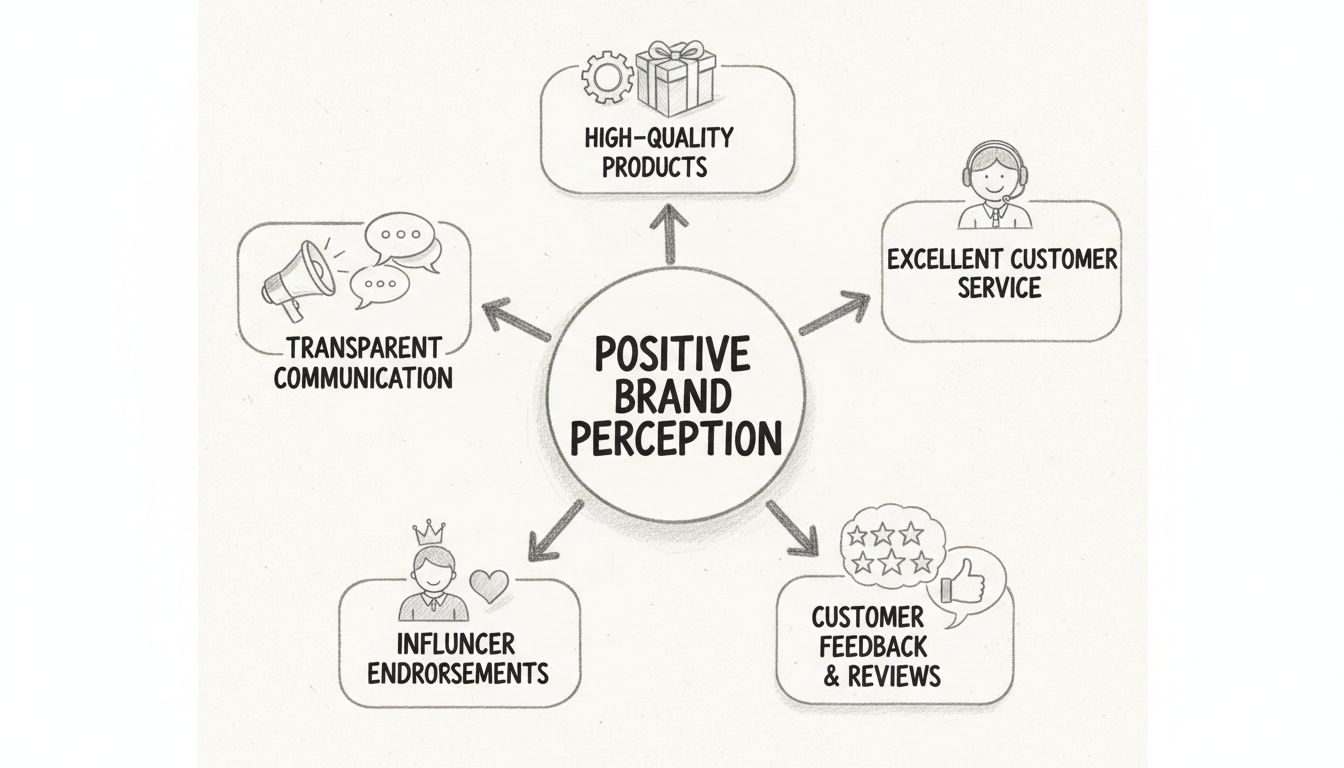
How Can Brands Improve Consumer Perception? Complete 2025 Guide
Learn proven strategies to improve consumer perception through quality products, customer service, transparent communication, reviews, and influencer partnershi...
Consumer perception is the process by which individuals form opinions about brands or products, influenced by direct and indirect interactions, marketing, and personal experiences.
Consumer perception refers to the process by which individuals form opinions or impressions about a brand, product, or service. This perception is not only shaped by direct interactions with the brand but also by marketing communications, peer reviews, and personal experiences. It’s a complex amalgamation of awareness, understanding, emotional responses, and the associations consumers develop over time. For instance, consumer perception is profoundly influenced by both direct interactions, such as purchasing and using a product, and indirect interactions, like seeing advertisements or hearing about the product through word-of-mouth. According to the Harvard Business Review, emotional connections play a significant role in consumer perception, with “fully connected” customers being 50% more valuable than highly satisfied ones. This perception ultimately influences purchasing decisions and brand loyalty , underscoring the importance of creating positive consumer experiences.
Understanding and managing consumer perception is vital for businesses, especially in competitive fields like affiliate marketing and software development. Positive consumer perception can lead to increased brand loyalty, higher customer satisfaction, and improved market positioning. Conversely, negative perception can deter potential customers and damage brand reputation . For instance, brands that consistently meet or exceed consumer expectations through high-quality products and excellent customer service are more likely to enjoy a positive perception, leading to long-term success.
Consumer perception directly impacts purchasing behavior. A positive perception can encourage consumers to choose a particular brand over competitors, while a negative perception can lead to lost sales opportunities. For affiliate marketers , aligning consumer perception with brand messaging is essential for driving conversions and maximizing affiliate earnings . By understanding consumer needs and preferences, brands can tailor their marketing strategies to resonate with their target audience effectively.
A strong consumer perception fosters brand loyalty, encouraging repeat purchases and customer advocacy. Loyal customers often become brand ambassadors, promoting the brand through positive word-of-mouth and influencing their networks, which is a valuable asset in affiliate marketing strategies . Building brand loyalty requires consistent delivery of value, excellent customer service, and engagement with consumers to build trust and satisfaction.
In a crowded marketplace, businesses that effectively manage consumer perception can differentiate themselves from competitors. By consistently delivering on brand promises and exceeding customer expectations, brands can establish a favorable perception that enhances their competitive position. This involves understanding consumer needs, adapting to market trends, and maintaining a strong brand identity across all consumer touchpoints.
Several factors contribute to how consumers perceive a brand or product. Understanding these factors can help businesses tailor their strategies to enhance consumer perception:
Measuring consumer perception involves assessing how consumers view and feel about a brand. This can be achieved through various methods:
Effective management of consumer perception involves proactive strategies to shape and enhance how consumers view a brand:
Consumer perception is the process by which individuals form opinions or impressions about a brand, product, or service, influenced by direct experiences, marketing communications, peer reviews, and emotional responses.
It directly impacts purchasing decisions, brand loyalty, and overall success—positive perception can increase conversions, while negative perception can harm your brand and affiliate earnings.
By ensuring high-quality products, excellent customer service, transparent communication, and leveraging feedback, reviews, and influencer endorsements to shape positive impressions.
Key factors include customer feedback, online reviews, advertising, quality of customer service, overall customer experiences, and social proof from influencers or satisfied customers.
Brands use surveys, Net Promoter Score (NPS), social media monitoring, customer interviews, and competitive analysis to assess and improve consumer perception.
Unlock key concepts like consumer perception and equip your business with the tools to build trust, loyalty, and sales.

Learn proven strategies to improve consumer perception through quality products, customer service, transparent communication, reviews, and influencer partnershi...

Discover the key factors influencing consumer perception including reviews, customer service, product quality, and social proof. Learn how to optimize perceptio...

Learn how brands measure consumer perception using surveys, NPS, social media monitoring, customer interviews, and competitive analysis. Discover best practices...
Cookie Consent
We use cookies to enhance your browsing experience and analyze our traffic. See our privacy policy.